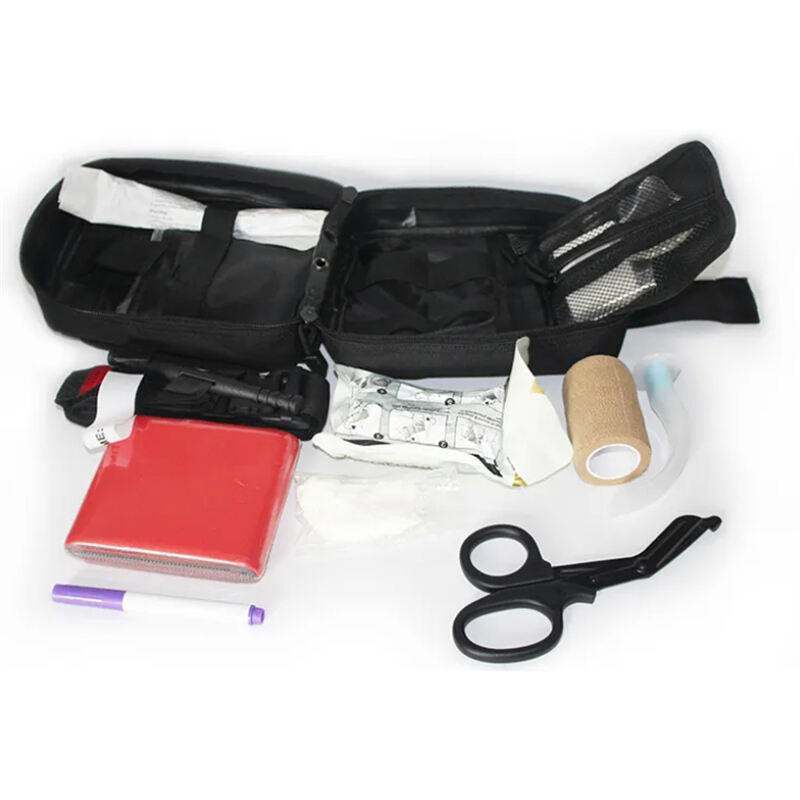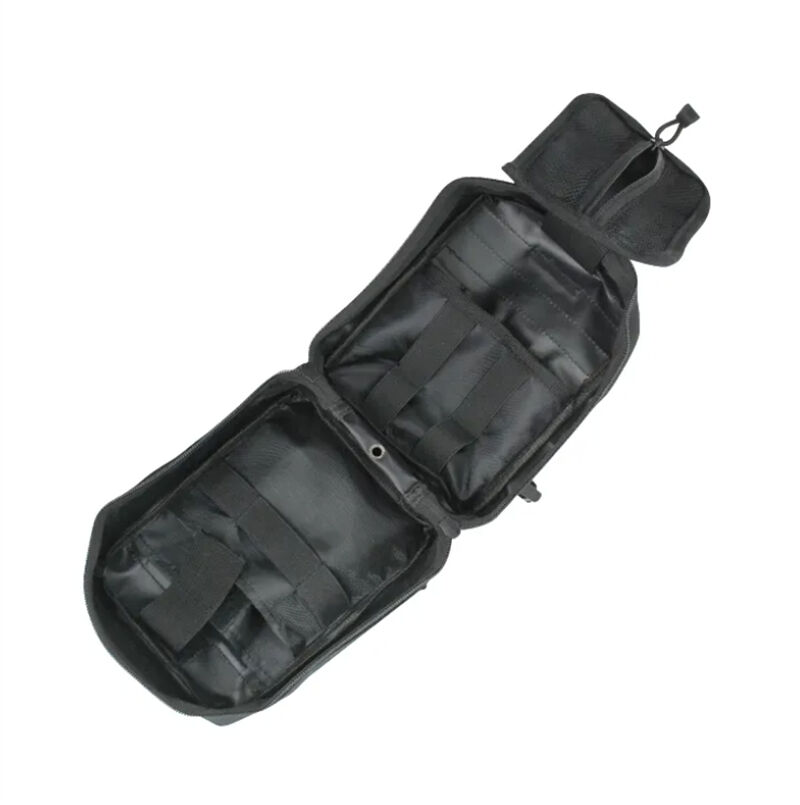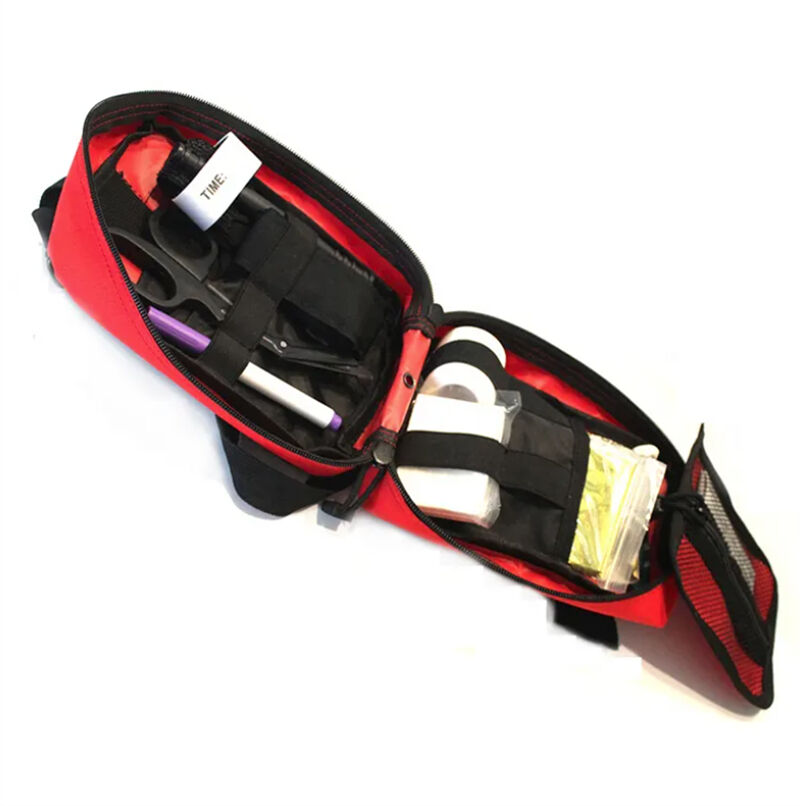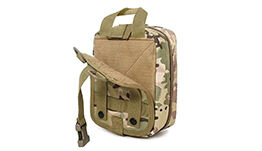IFAK Trauma Kit: A Lifesaving Essential in Critical Moments
In today’s unpredictable world, emergency responders, military personnel, and outdoor enthusiasts must be prepared to face life-threatening situations. One of the most critical tools in their arsenal is an Individual First Aid Kit (IFAK) Trauma Kit. Compact yet comprehensive, an IFAK isn’t just a collection of medical supplies—it’s a lifeline designed for severe injuries like hemorrhage, chest trauma, airway obstruction, and shock.
Why the IFAK Trauma Kit Matters
An IFAK bridges the crucial gap between injury and emergency care. Trauma statistics consistently show that early intervention—within the first minutes after injury—greatly increases survival chances. That’s where an IFAK shines: offering rapid access to essential items like:
Hemostatic gauze to stop bleeding fast
Windlass rod tourniquets for extremity hemorrhages
Chest seals for sucking chest wounds
Nasopharyngeal airways to secure breathing
These tools, used together under the MARCH protocol (Massive hemorrhage – Airway – Respiration – Circulation – Head injury/hypothermia), empower medics and laypersons to act decisively.

Core Components of an IFAK Trauma Kit
An effective IFAK Trauma Kit includes specialized items tailored for immediate trauma care:
1. Tourniquet
Often a windlass rod tourniquet, this is the go-to tool for controlling severe limb bleeding. Quick, powerful, and widely used by both armed forces and responders.
2. Hemostatic Gauze
Typically infused with kaolin or chitosan, this gauze accelerates clot formation. It's indispensable for packing deep wounds and junctional hemorrhages, working faster than plain gauze.
3. Chest Seal
Used to treat and prevent open or sucking chest wounds, chest seals create an airtight barrier, helping to avoid potentially fatal tension pneumothorax.
4. Nasopharyngeal Airway (NPA)
When victims can’t maintain their airway, an NPA—easy to use even in unconscious patients—becomes critical for breathing support.
5. Decompression Needle
In case of tension pneumothorax, this needle offers life-saving relief by releasing trapped air from the chest cavity under pressure.
6. Emergency Blanket
To combat hypothermia, an emergency thermal blanket helps maintain core temperature—crucial during prolonged field care.
7. Additional Medical Tools
These include gloves, trauma shears, chest decompression needles, compresses, secure dressings, and antiseptics—ensuring the kit is mission-ready.
Customizing the IFAK for Different Scenarios
One of the IFAK’s strengths is its modular nature. Users can adapt the kit based on:
Mission type: military kits may include specialized chest decompression needles, while civilian kits might emphasize civilians’ bleeding control and splinting materials.
Environment: cold weather might require more insulating items such as blankets or hand warmers.
Individual roles: medics may include medications (e.g., epinephrine, morphine), tourniquet variants, or specialized items for pediatric or elder care.
Customizer options meet diverse needs while keeping the kit compact and efficient.

Training: The Key to Effective Use
Possessing an IFAK is not enough—know-how is crucial. Regular hands-on training, including bleeding control drills and simulated airway management, strengthens readiness. Training alongside tools helps build muscle memory under stress. Standard protocols like “Stop the Bleed” or MARCH ensure streamlined responses and fast deployment.
Routine inspection of kit items is equally important: replacing expired medications, resealing vacuum packs, and swapping damaged items ensure the kit works when needed.
Advantages of IFAK Trauma Kits
Compact & Lightweight: Easily carried by individuals in backpacks, vehicle kits, or mounted pouches.
High Impact: Studies show that hemorrhage control in the first few minutes greatly reduces mortality.
Broad Utility: Equally effective in military theaters, roadside accidents, active shooter scenarios, or wilderness rescues.
User-Friendly: Designed for rapid deployment and intuitive application, even by minimally trained users.
These benefits underscore why IFAKs have become standard in high-risk professions and emergency preparedness plans.
Real-Life Success Stories
Instances of lives saved by quick tourniquet application and chest seal deployment during gunshot, stabbing incidents, and industrial accidents highlight the IFAK’s impact. Medics and bystanders credit timely hemorrhage control and airway management for making the difference between life and death.
Best Practices for IFAK Users
Prioritize training—skill beats gear in high-stress scenarios.
Customize the kit—fit contents to your role and environment.
Regularly inspect and replenish—ensure all items function properly.
Choose quality—invest in rugged, certified components (e.g., silicone tourniquets, hydrogel-based chest seals).
Educate teammates—team readiness hinges on all members being able to use the equipment effectively.

Medresq: Your Trusted IFAK Trauma Kit Partner
At Medresq, we specialize in manufacturing premium IFAK Trauma Kits designed for tactical, EMS, military, and outdoor applications. With over 20 years of experience and a 15,000 m² facility, we ensure rapid production, strict quality control (ISO 9001, CE, FDA), and global shipping to over 60 countries.
Customization is our forte: we offer OEM/ODM services, allowing you to choose specific components, packaging, labeling, and instructional materials tailored to your organization—whether active shooter teams, air rescue units, or outdoor safety groups.
Let Medresq be your go-to supplier for trauma kits that save lives. Reach out today to discuss bulk orders, product certifications, and customized packaging solutions.
Hot News
-
Advancements in Medical Structures: Enhancing Emergency Response and Patient Care
2025-06-13
-
The Vital Role of Stretchers in Emergency Medical Care
2025-03-07
-
DEVELOPMENT AND PROSPECT OF BATTLEFIELD INDIVIDUAL FIRST AID KIT
2025-02-20
-
Enhancing Emergency Response: The Role of IFAKs in Trauma Care
2025-02-20
-
Windlass Rod Tourniquet: An Essential Component in Emergency Medical Response
2025-02-13
-
The Windlass Rod Tourniquet: A Lifesaving Device in Emergency Medical Response
2025-02-13
-
Decompression Needle: Essential Design, Usage, and Future Directions in Trauma Care
2024-11-29
 EN
EN
 FR
FR
 DE
DE
 IT
IT
 JA
JA
 KO
KO
 RU
RU
 ES
ES
 AR
AR
 BG
BG
 HR
HR
 DA
DA
 NL
NL
 FI
FI
 EL
EL
 NO
NO
 PL
PL
 PT
PT
 RO
RO
 SV
SV
 TL
TL
 ID
ID
 SR
SR
 UK
UK
 VI
VI
 SQ
SQ
 TH
TH
 TR
TR
 AF
AF
 MS
MS
 CY
CY
 IS
IS
 HY
HY
 AZ
AZ
 KA
KA
 MN
MN
 MY
MY
 KK
KK
 UZ
UZ
 CS
CS



